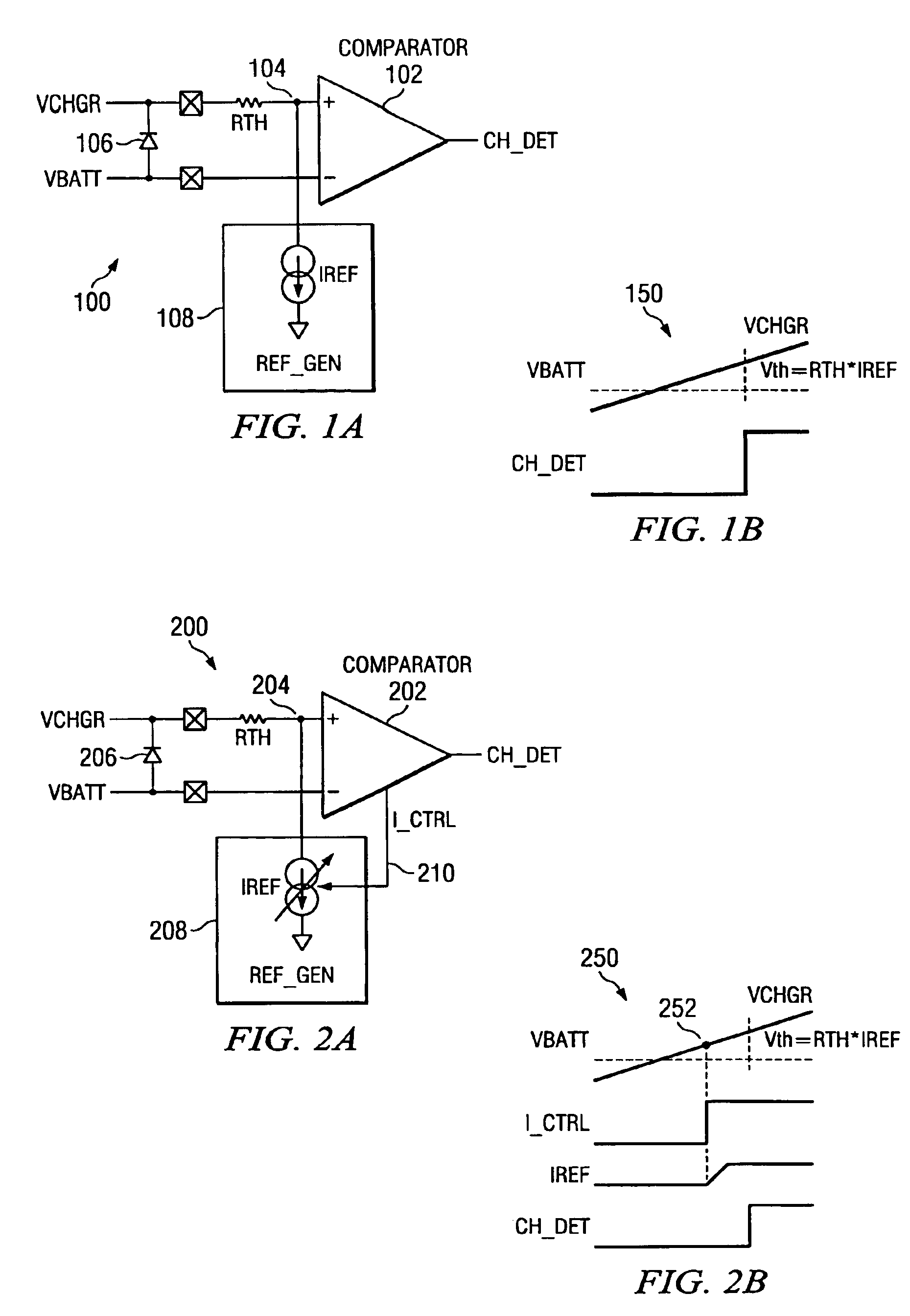Detection circuit having an adaptive threshold
- Summary
- Abstract
- Description
- Claims
- Application Information
AI Technical Summary
Benefits of technology
Problems solved by technology
Method used
Image
Examples
Embodiment Construction
FIG. 2A shows a block diagram of the voltage detector according to the present invention generally as 200. The battery charger voltage VCHRG is applied to the non-inverting input of comparator 202 via series resistance RTH. The battery voltage VBATT is applied to the inverting terminal of comparator 202. Diode 206 represents the back gate diode for the FET. A current reference generator 208 generates a current reference IREF which is drawn through resistance RTH from node 204 to the reference potential. In the circuit shown in FIG. 2A, the reference generator 208 generates a reference current which has two levels, the level of reference current generated by the reference signal generator 208 being dependent upon a control signal I_CTRL output from the comparator on line 210.
FIG. 2B represents the waveforms for the apparatus in FIG. 2A as the input voltage VCHRG is raised past the battery voltage VBATT. As can be seen from these waveforms, the signal IREF has two distinct levels and ...
PUM
 Login to View More
Login to View More Abstract
Description
Claims
Application Information
 Login to View More
Login to View More - R&D
- Intellectual Property
- Life Sciences
- Materials
- Tech Scout
- Unparalleled Data Quality
- Higher Quality Content
- 60% Fewer Hallucinations
Browse by: Latest US Patents, China's latest patents, Technical Efficacy Thesaurus, Application Domain, Technology Topic, Popular Technical Reports.
© 2025 PatSnap. All rights reserved.Legal|Privacy policy|Modern Slavery Act Transparency Statement|Sitemap|About US| Contact US: help@patsnap.com



